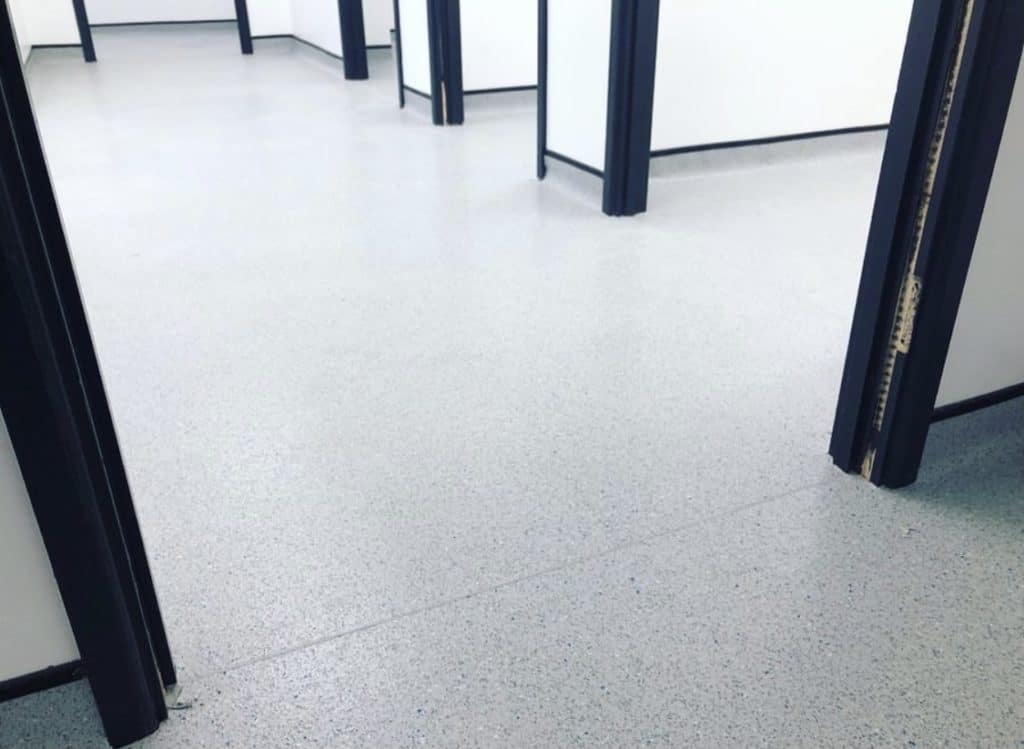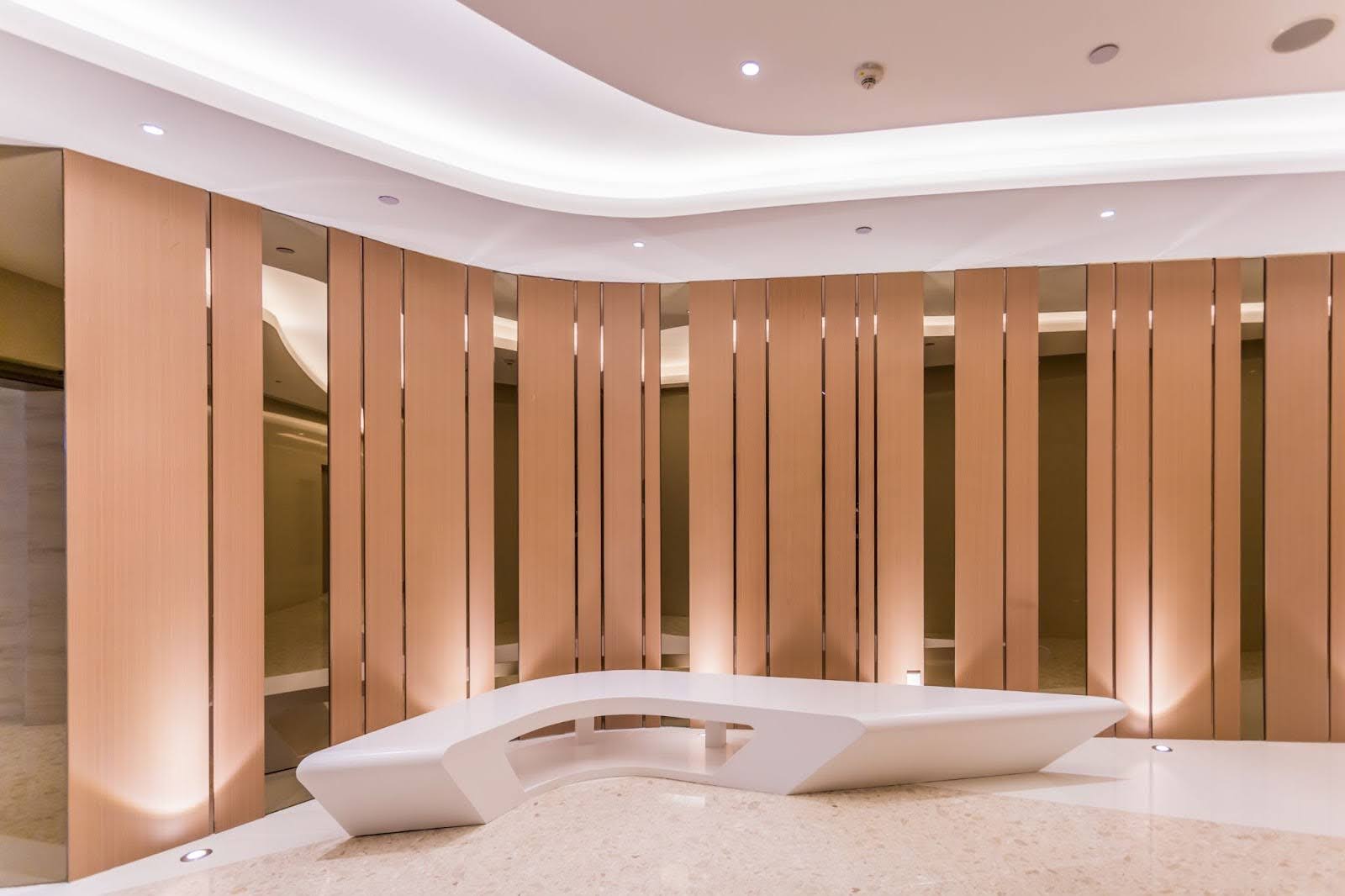Safety flooring is a vital element in all kinds of settings that include industrial, commercial, and residential areas. Its main function is to provide a safe flooring that is slip-resistant and helps reduce the risk of injuries and accidents. This kind of flooring is especially important for areas that are heavily used, like hospitals, schools, and gyms, as well as commercial kitchens.
Built to last, the safety flooring can endure heavy usage and provide an extremely long-lasting solution to maintain the safety of your home. Beyond preventing slips, the flooring also offers advantages like reduced noise, better ease of use for those who walk or stand on it, and resistance to chemicals and staining. This makes it a great option for areas where cleanliness and hygiene are of paramount importance.
Safety flooring comes in a wide range of colors and designs and can be customized to fit the aesthetics of any room. Investing in safety flooring is beneficial to the well-being of people who frequent the area. It could also result in savings due to a reduced risk of accidents and the possibility of liability claims. Its numerous advantages can be a great addition to all kinds of spaces and facilities.
Choosing the Right Safety Flooring for Your Space
When choosing the right flooring to be used in a particular area, it is important to think about the particular needs and requirements of the setting. For example, a health facility may require flooring that is impervious to bacterial growth and easy to clean, whereas commercial kitchens may require flooring that is able to withstand spills of oil and grease. It is crucial to consider the amount of foot traffic, the risk for contamination or spills, and any particular safety standards that have to be adhered to.
There are a variety of floorings that are safe, such as vinyl, rubber, and linoleum. Each has its own advantages and concerns. Vinyl flooring is renowned for its long-lasting durability and maintenance-free properties, which make it a preferred option for commercial environments. Safety flooring made of rubber offers superior protection against slips, provides comfort for the feet, and is suitable for places where employees will be on their feet for a long time.
Linoleum flooring is a green and natural option that has antimicrobial and slip resistance, which makes it a great choice for schools and hospitals. The best flooring option for safety is contingent on the particular requirements of the location and the style you want. A consultation with a flooring expert will make sure that the most suitable option is picked for the specific setting.
Preparing the Subfloor for Safety Flooring Installation
A proper prep of the floor is crucial for the success of installing flooring for safety. The subfloor should be level, clean, and free of any debris or contaminants that might compromise the quality of the flooring. Based on the type of flooring that is being installed, different ways of preparing may be needed.
For instance, when installing vinyl flooring, safety is required; it might be necessary to use a self-leveling material to smooth the surface. Alongside ensuring that the subfloor is in good condition and level, it is crucial to take care of any problems with moisture that may affect the flooring. Primers or moisture barriers could be necessary to stop water from getting through and damaging the flooring.
Proper preparation of the subfloor is an essential step in maintaining the performance and longevity of the safe.
Ensuring Proper Installation Techniques
After the subfloor is properly laid, it is important to make sure that the flooring, like mats made of rubber that are non-slip, is properly installed for maximum effectiveness. It is important to follow the manufacturer’s guidelines for applying adhesive seam sealing, as well as the acclimatization process of the flooring. It is vital to select the correct adhesives and installation methods for the particular kind of flooring that is being put in place to guarantee a secure and durable bond.
The proper installation methods also require care in cutting, fitting, and securing the floor to ensure a smooth surface. Any joints or seams need to be sealed properly to stop contamination or water from getting into the flooring. Also, making sure that the flooring is adjusted to the surroundings before installation will help avoid issues like warping or buckling over time.
A professional installation performed by knowledgeable flooring contractors is recommended to ensure that safe flooring is installed properly and in line with the industry standard. This can prevent costly mistakes and ensure the flooring is performing as it was intended.
Conducting Regular Maintenance and Inspections
Regular inspections and maintenance are crucial to preserving the safety and integrity of the flooring. It is important to clean regularly to eliminate dirt, debris, and spills that may cause slip resistance to be compromised. In accordance with the kind of flooring, specific cleaning methods and products might be suggested to maintain the performance of the flooring.
Alongside the regular cleaning, periodic inspections must be carried out to find any indications of wear, damage, or deterioration of the flooring for safety. This could include examining for worn edges, loose edges, or damage caused by furniture or heavy equipment. It is important to make repairs promptly whenever needed to avoid further harm and ensure the security of the flooring.
Setting up a maintenance program and educating staff members on the appropriate cleaning methods can keep flooring that is safe in top condition for the duration of its life. If you are proactive in checks and maintenance, problems that could arise can be discovered in the early stages and dealt with prior to them becoming major issues.
Addressing Common Safety Flooring Issues
Despite its toughness and slip-resistant characteristics, the safety flooring may have issues that require focus. A common problem is the wear and tear that occurs in areas with high traffic, which may result in less slip resistance over time. This can be fixed with regular maintenance and, if necessary, applying an additional coat or sealant to restore the slip resistance.
Another issue that is common is damage caused by the weight of tools or sharp items, which could compromise the quality of the flooring. It is imperative to make repairs promptly to avoid further damage and to ensure the safety of the flooring. Also, taking care to address any issues with moisture that might occur can prevent the growth of mildew or mold under the flooring.
It is essential to address the common concerns with safety flooring promptly to ensure a secure environment for all who are using the area. If you are proactive about dealing with potential issues, you ensure the long-term durability and efficiency of the flooring is protected.
Training and Educating Staff on Safety Flooring Best Practices
Instructing and training staff regarding the best practices for flooring safety is crucial to maintain the safety of the floor and its durability. This includes guiding staff regarding proper cleaning methods and spill response methods, and recognizing the signs of wear or damage on the flooring. The staff should be taught about how important it is to promptly address spills and contaminants on the flooring that is used for safety at Adelaide playing fields, as well as other places, to prevent falls and slips.
In addition, they should be taught how to take care of and clean the floor, without damaging the slip-resistant qualities of the flooring. In addition, they must be aware of the ways their actions could impact the durability of flooring, for example, making use of the right furniture glides or other equipment to protect the flooring from damage. Through ongoing training and education about the best practices for flooring safety, personnel can take an active role in keeping the safety of everyone who uses the area.
Conclusion
In the end, safe flooring is essential to creating a safe space in a variety of situations. Understanding its significance in determining the best type of flooring for a particular area, preparing the subfloor correctly, ensuring that the correct installation methods are followed, ensuring regular inspections and maintenance, and addressing issues that arise frequently and informing staff members in the most effective procedures, a safe and secure space can be created for everyone who uses the space.
The investment in a high-quality safety flooring does not just increase safety, but also provides savings on costs by reducing injuries and liability claims.




